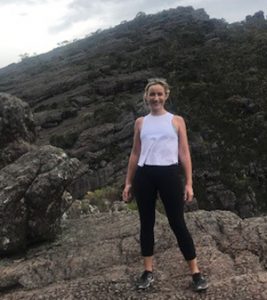/ Dr. Fiona Desmond

Biography
BMedSci, MB BCh BAO (Hons), FCARCSI, DipPainMed, FJFICMI, DipHealthEc, AdvPTEeXAM, FANZCA
I trained as a consultant anaesthetist and intensivist in Ireland, having completed the Irish training programme in 2013. I moved to Melbourne, Australia for further training and completed fellowships in paediatric intensive care medicine and paediatric anaesthesia at the Royal Childrens Hospital and further fellowships in liver transplantation and cardiac anaesthesia at Austin Health.
I currently work at Austin health as a staff specialist anaesthetist and specialise in liver transplantation and hepatobiliary anaesthesia, cardiac anaesthesia and paediatric anaesthesia. I remain involved in paediatric liver transplantation at the RCH.
I am currently completing a Masters in Business and Healthcare Administration with Monash University, for completion in early 2019.
Preserving Harvested Organs.
Trying to optimise and preserve donor organs is a challenge in transplant anaesthesia and surgery. In addition donor shortage remains an obstacle for organ transplantation, specifically looking at liver transplantation. The inability to assess donor grafts, specifically borderline grafts prior to transplantation, results in the wastage of potential donor organs(1).
The development of normothermic external perfusion devices, whose aim is to optimise and preserve the donor liver, for up to 12 hours prior to transplantation, is a welcome area of growth.
With these perfusion devices, the organ can be reperfused warm, for up to 12 hours post procurement, with continual functional assessment of organ function, termed ‘viability testing’. Based on new clinical data, this device allows for the transplantation of borderline organs that would otherwise have been declared unsuitable(2)(3). This allows the surgical team to confidently transplant an organ that can almost be guaranteed to function well.
It also allows for better strategic timing of transplantation with further pharmaco-economic benefits, better use of theatre staff, resources and theatre time.
It is postulated that the number of liver transplants being performed worldwide could double as a result of this new intervention.
References:
(1) Bruinsma, B. G. et al. Functional Human Liver Preservation and Recovery by means of Subnormothermic Machine Perfusion. J. Vis. Expo 2015 (98), e52777
(2) Dagmar Kollmann, Markus Selzner. Recent advances in the field ex-vivo liver perfusion. Curr Opin Organ Transplant 2017, 22:555-562
(3) Jay A. Graham, James V. Guarrera. ‘Resuscitation’ of Marginal Liver Allografts for Transplantation with Machine Perfusion Technology. Journal of Hepatology. Vol 61, Issue 2. 2014 p418-431
